On March 8, 2017, a powerful wave swept into the depths of the Mediterranean Sea, one of Malta’s most prominent landmarks. The Azure Window was a naturally sculpted limestone arch in the rocks, like a window to the sea. The place disappeared forever.
The site, which used to attract hundreds of visitors to the island of Gozo and was a source of pride among its residents, is lost forever.
The world is in constant transformation, both by the forces of nature and human action. Things that have been there for years and years disappear entirely in a matter of seconds – or undergo slow degradation until one day, they no longer exist.
It’s impossible to predict what humanity will lose in the coming decades due to wars, terrorist attacks, and natural disasters. Some tragedies, however, are foretold. Pollution, global warming, and urban expansion are slow but constant threats to natural beauties and historic heritages that have existed for centuries. Here are some of them.
Places that might disappear over the next decades
Suggested Read:
• Must-visit winter gateways to go this season
• Top 10 Sustainable Travel Destinations to Visit in 2024
1. Taj Mahal

The Taj Mahal is turning green. The reason for the beautiful white marble changing color is the feces of insects circulating in the area, attracted by the polluted Yamuna River that runs nearby. “Right behind the monument, there are 52 pipes discharging sewage into the river,” environmental activist DK Joshi told the BBC.
“The water of the Yamuna is so stagnant that the fish that fed on the insects are dying – which allows the pests to proliferate in the river.” The stains can be removed with cleaning products, but that’s precisely where the danger lies: the chemicals in these products permanently damage the marble.
And that’s not even the only threat to this beautiful monument of love. In addition to the unpleasant color of feces, the marble was already undergoing another process that affected its coloration: pollution generated by an oil refinery near the city of Agra caused the palace to acquire a strange yellowish hue. The mausoleum has undergone mud treatments to remove pollutants several times over the last thirty years.
In 2011, experts also detected severe erosion in the Taj’s mahogany foundations, which could bring it to the ground. At the time, they said the disaster could occur within five years, a deadline that has already passed.
The Indian government decided to limit the number of daily visitors to 40,000 to reduce the pressure on the monument’s foundations. This decision came after safety concerns grew due to the large number of visitors and incidents, such as a stampede that injured five people.
Before that, the number of people passing through the temple could reach 70,000 on weekends.
2. The Great Barrier Reef

The Great Barrier Reef in Australia, the world’s largest coral barrier, is under threat from pollution. Global warming is affecting ocean pH and causing severe heat stress to this ecosystem, leading to mass coral bleaching.
This means the colorful reefs are transforming into lifeless white cemeteries in the oceans. In the past, the Great Barrier Reef experienced back-to-back bleaching.
The Reef rebounded significantly in 2022 under cooler La Niña conditions. However, this recovery has been uneven and faces challenges, with parts of the Reef experiencing bleaching in 2023, and the consequences of this year’s Super El Niño will likely reverse this recovery.
In general, corals take 15 to 20 years to recover from mass bleaching. However, with the speed at which they are currently occurring, there is fear that the ecosystems will not have time to recover and may become extinct. According to the WWF, almost a third of the world’s coral reefs have already disappeared, and the rest may vanish before the middle of this century. Only four of the 29 coral ecosystems listed as World Heritage have not suffered bleaching in the last three years.
For UNESCO, the Paris Agreement, which aims to stabilize global warming at two degrees Celsius above pre-industrial levels, is the only chance to save the corals. The extinction of these ecosystems would be catastrophic for marine life and the global economy.
3. The Dead Sea

Isolated from the Mediterranean Sea 18,000 years ago due to tectonic activity, the Dead Sea is a place of great historical and religious importance for the world’s three major monotheistic faiths. Additionally, it attracts thousands of tourists who want to experience the phenomenon of not sinking in its hypersaline waters. However, if nothing is done, the Dead Sea will disappear by 2050.
For centuries, the Dead Sea maintained its water volume through a delicate balance between the inflow from the Jordan River and other small tributaries and the amount that evaporated. Since 1960, after Israel began using a small dam to collect river water and supply the country, the Dead Sea’s water volume has drastically reduced and continues to decrease each year.
Additionally, factories in Israel and Jordan are extracting water for potash, bromine, and magnesium production, only replacing half of the water removed.
Recently, the Israeli and Jordanian governments signed a declaration of intent to collaborate on the ecological restoration and sustainable development of the Jordan River. However, Israel currently has no approved plans to refill the Dead Sea.
4. San Blas Islands

The San Blas Islands, an archipelago of over 350 islands in the Caribbean Sea and known as Guna Yala to its indigenous inhabitants, face a significant risk of disappearing within the coming decades.
The islands, home to the Guna tribe for hundreds of years, have become increasingly vulnerable due to environmental changes. The degradation of the surrounding reefs, which previously acted as a protective barrier, has led to accelerated sea level rise and significant coastal erosion.
As a result, the future of the San Blas Islands is in serious jeopardy, with the potential of being submerged underwater. This looming threat raises concerns not only about the loss of land but also about the displacement of the native Guna people, who have lived independently with their own constitution and government since 1925.
In fact, they have already devised an escape plan for some of their islands and are considered the first refugees of global warming.
And these are not the only paradisiac islands facing this threat. It is estimated that by the end of the century, the Maldives and Seychelles will be swallowed by the seas. Kiribati and Tuvalu are other destinations at risk of disappearing.
5. Venice
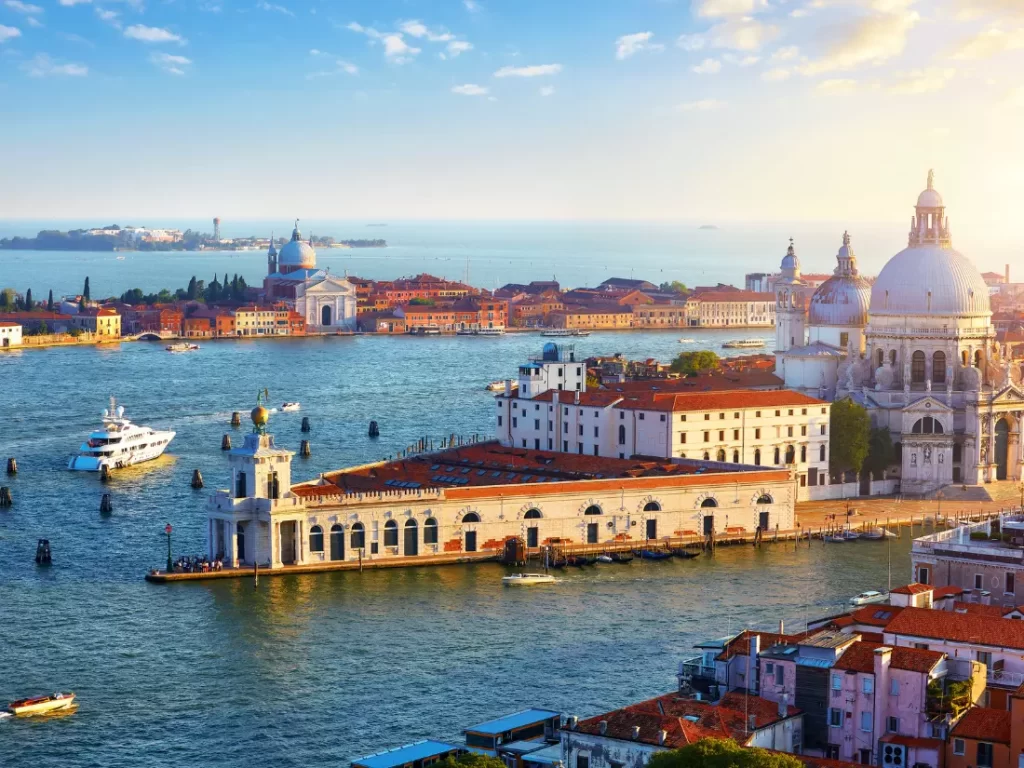
Venice’s relationship with water has always been complex, and recent developments underscore the increasing challenges the city faces. For years, Venice has grappled with the threat of flooding, exacerbated by its location in a high tectonic activity zone at the base of the Apennines, along with the compaction of sediments leading to the city sinking by 1 to 2 millimeters annually.
Recently, major public figures and environmentalists have acknowledged that sea-level rise is now the primary challenge for Venice. The mobile barriers known as Mose, designed to protect the city against temporary flooding events, have been activated 50 times since 2020. However, it’s crucial to note that these barriers are not a solution to the chronic issue of rising sea levels.
There are calls for more radical measures, including suggestions to change the barrier closure policy to protect the city more proactively. Currently, barriers are closed only when water is expected to reach 130cm above a reference point established in 1897, often resulting in significant parts of the city, like St Mark’s Basilica, being submerged. There’s also a proposal for a holding port outside the lagoon’s entrance to balance the conflicting needs of flood protection and maritime access.
The future of Venice, as it stands, may see it disappearing by 2100 if substantial and innovative measures are not implemented. The urgent need for strategic planning and adequate funding for the maintenance and operation of the Mose project highlights the critical state of the city’s battle against rising waters.
6. Glacier National Park (USA)
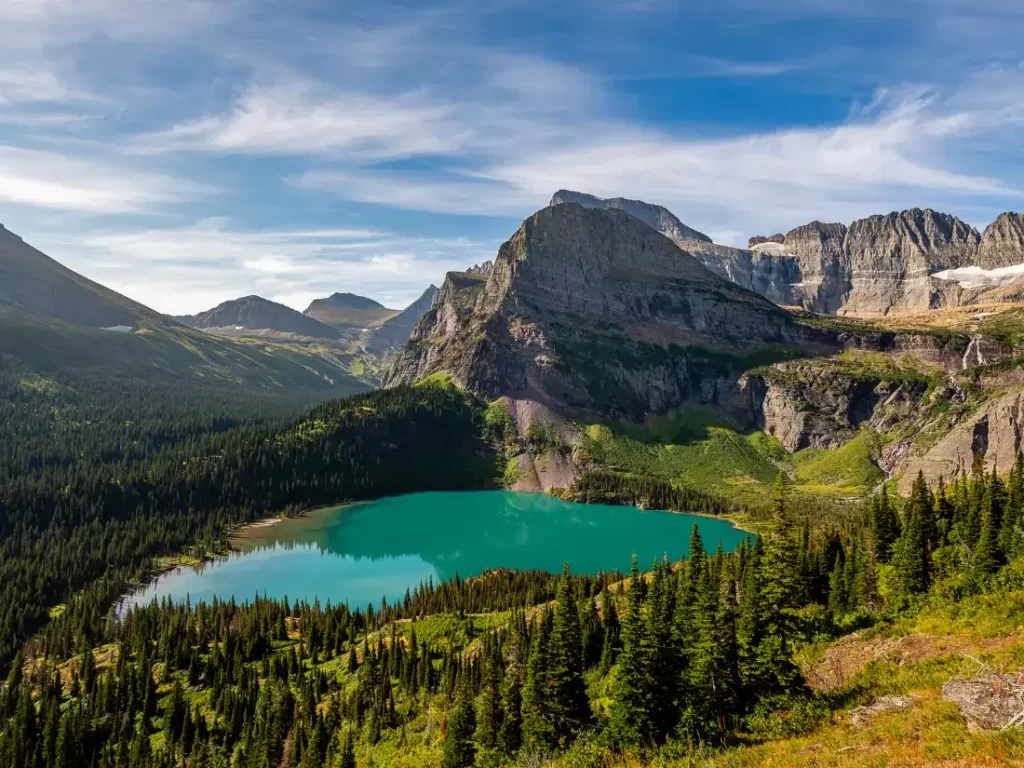
The beautiful mountains of Glacier National Park in Montana are facing a significant and rapid loss of its iconic glaciers, a situation that reflects the broader impacts of climate change. According to projections, the park is expected to be glacier-free by 2030, based on a geospatial model that considered factors like warmer summer temperatures and changes in snowfall.
In 1850, the area of the Rocky Mountains where the park is located had about 150 documented glaciers. By 1968, this number had decreased to 83, and today only 25 ice bodies remain.
Photographs and ground-based surveys have been crucial in tracking these changes. Notably, the Grinnell Glacier, one of the most studied in the park, is losing approximately 2 to 3 acres per year due to warm summer temperatures. This glacier, once 115 acres in size, has noticeably thinned and shrunk in area, with a significant reduction in mass making it particularly vulnerable.
Moreover, climate change is impacting Glacier National Park beyond just its glaciers. Increased wildfire frequency, evidenced by burn scars from various fires over the years, marks another aspect of the changing landscape.
As global and regional climates continue to warm, these phenomena are likely to become more frequent. By 2030, the remaining glaciers are expected to be reduced to small, insignificant remnants, signaling a profound transformation of this iconic landscape.
7. Great Wall of China

A long stretch of the Great Wall of China is at risk of disappearing due to natural erosion and unchecked human activity. Research conducted by the China Great Wall Society reveals that only about eight percent of the Wall, particularly the section built during the Ming dynasty, which is the most visible today, is well-preserved.
Nearly one-third of the Wall has already succumbed to erosion caused by rain, and the growth of trees and grass in the cracks has increased the risk of collapse.
Human activities have also contributed significantly to the deterioration of this UNESCO World Heritage site. Illegal practices, such as the theft of bricks from the Wall for trade, have threatened its conservation. Additionally, the increasing number of tourists visiting unrepaired sections of the Wall has led to further damage. Unfortunately, some local governments have only focused on protecting and repairing short sections of the Wall that attract the most visitors and bring economic benefits, neglecting other parts of this historic structure.
These factors combined to paint a concerning picture for the future of the Great Wall of China, highlighting the need for more comprehensive preservation efforts to safeguard this iconic symbol of Chinese heritage.
8. Snowcap and glaciers in Mount Kilimanjaro
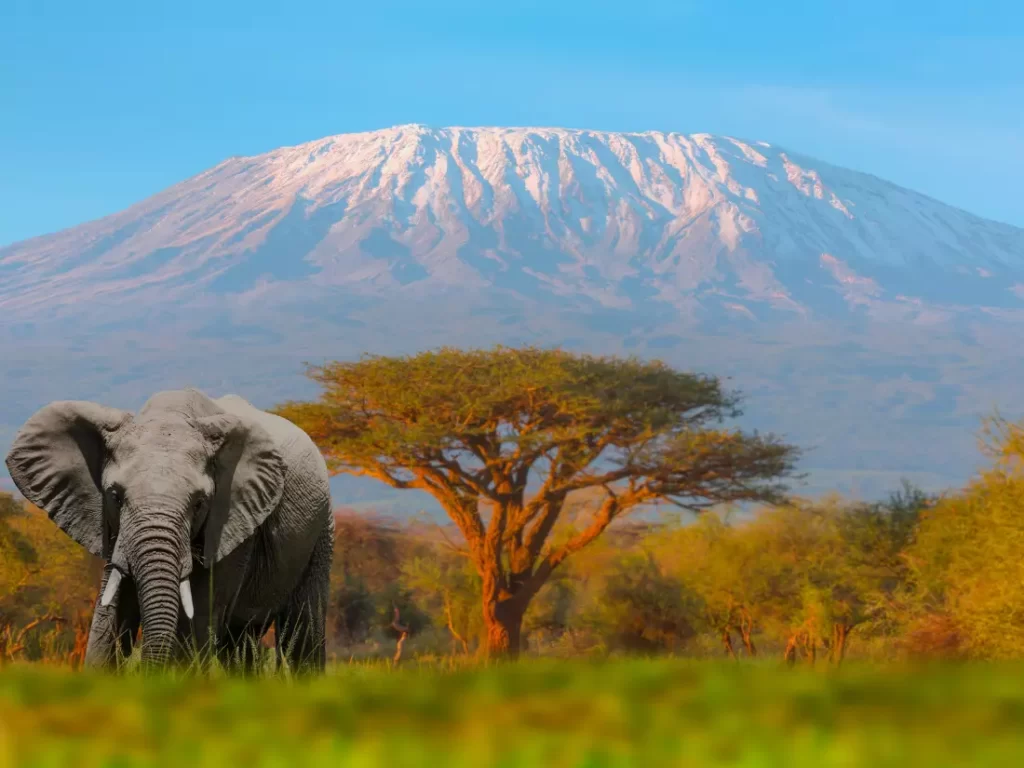
Mount Kilimanjaro in Tanzania, Africa’s tallest mountain, is experiencing a significant loss of its iconic snow cap and glaciers, a situation that has been closely linked to broader climate change impacts.
Over the last century, Kilimanjaro’s ice coverage has shrunk by over 90%, and conservative estimates suggest that most of the ice could be gone by 2040. While global average temperatures have been steadily rising, causing widespread glacial retreat at mid and low altitudes, the case of Kilimanjaro is different due to its height and location.
They lie about 1000 meters above the mean freezing level, making them less sensitive to immediate local air temperature changes. However, the absorption of solar radiation leads to the sublimation of the ice. This process is compounded by a dramatic reduction in precipitation over the mountain. The shape of Kilimanjaro’s glaciers and their vertical cliff faces make it difficult for snow to settle and become part of the ice sheet.
The decrease in precipitation over Kilimanjaro is linked to shifts in the dynamics of the Indian Ocean in the late 19th century, which resulted in less moist air flowing into East Africa. This process was natural in origin but has likely been exacerbated by global warming in recent years.
9. North Africa
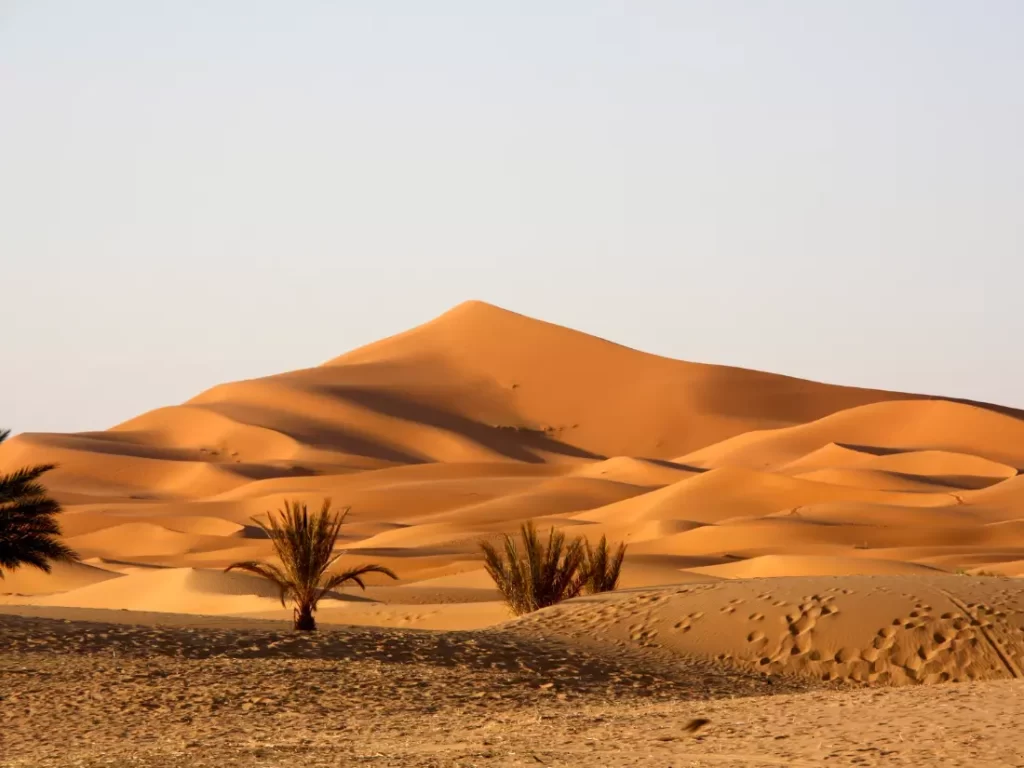
The Sahara is the largest hot desert in the world. It occupies a staggering area, stretching from the Red Sea to the Atlantic Ocean. And it is expanding.
Over the past few decades, this vast expanse of sand has been inching southward, threatening to engulf regions that were once fertile and thriving. These areas, rich in culture and history, are at risk, but they also serve as a testament to the resilience of human communities and the importance of sustainable practices.
The idea of the Sahara gobbling up its surroundings at a speed of 0.8 kilometers per month might sound like a plot from a sci-fi movie. But the reality is a bit less dramatic and far more intricate. The Sahara’s expansion is tied to various factors, including climate change, land use practices, and atmospheric patterns.
What’s needed is conscious action to combat the underlying causes of this expansion, such as global warming and soil degradation. This includes more effective land management policies, sustainable agricultural practices, and global efforts to tackle climate change.
Here are a few places threatened by Sahaara expansion in North Africa:
- Lake Chad Region: The Shrinking Oasis
- Lake Chad, once one of Africa’s largest lakes, has shrunk dramatically in recent years. It’s a lifeline for millions of people in Chad, Cameroon, Niger, and Nigeria, providing water for agriculture and fishing. However, as the Sahara expands, the lake’s water sources are dwindling, leaving communities vulnerable.
- Sahel Region: A Fragile Belt
- The Sahel, a semi-arid belt to the south of the Sahara, is prone to desertification. As the desert creeps closer, it threatens the livelihoods of countless people who rely on the land for farming and grazing.
- Northern Nigeria: A Battle Against Encroachment
- In northern Nigeria, particularly in states bordering the Sahara, desert encroachment is a growing problem. Communities are grappling with the loss of arable land and the displacement of families.
- Sudan and South Sudan: Desert’s Reach
- Both Sudan and South Sudan face challenges from desertification in their northern regions. The gradual disappearance of fertile land threatens food security and exacerbates existing challenges.
- Mali: The Struggle Continues
- In Mali, the northern part of the country, including the historic city of Timbuktu, has been affected by desertification. The shifting sands threaten cultural heritage and the traditional way of life.
- Morocco’s Southern Edge: Battling the Sahara
- Parts of southern Morocco are also vulnerable to Sahara Desert expansion. Efforts are being made to combat desertification and preserve this unique landscape.
Addressing the challenge of desertification involves various strategies, including erosion control, vegetation upkeep, and soil health maintenance. While these efforts are crucial, they also require substantial cooperation and support, especially considering the multitude of challenges these nations already face.
10. Amazon Forrest

The Amazon Rainforest plays a crucial role in regulating the planet’s climate. However, it faces a severe threat from deforestation. Vast stretches of this pristine wilderness are being cleared for agriculture, logging, and development, disrupting the ecosystem’s delicate balance.
The rate of deforestation in the Amazon varies from year to year, but it has been a persistent issue. In 2020, deforestation in the Brazilian Amazon reached a 12-year high, with an estimated 11,088 square kilometers (4,281 square miles) of forest lost, according to Brazil’s National Institute for Space Research (INPE) data.
The primary drivers of deforestation in the Amazon include logging, agriculture (particularly cattle ranching and soybean farming), mining, infrastructure development (such as roads and dams), and illegal land grabbing.
Home to approximately 10% of known species in the world, some of them found nowhere else, the Amazon is a biodiversity hotspot. As forests disappear, many species face the risk of extinction, and indigenous communities lose their ancestral lands.
The Amazon absorbs vast amounts of carbon dioxide, helping mitigate climate change’s effects. But as trees are felled, this carbon absorption capacity diminishes, contributing to global warming.
Indigenous peoples have thrived in the Amazon for centuries, living in harmony with the forest. Their rights and cultures are threatened as their lands are encroached upon. Supporting indigenous communities in their fight for land rights is crucial for preserving their way of life and the rainforest.
11. Congo Basin
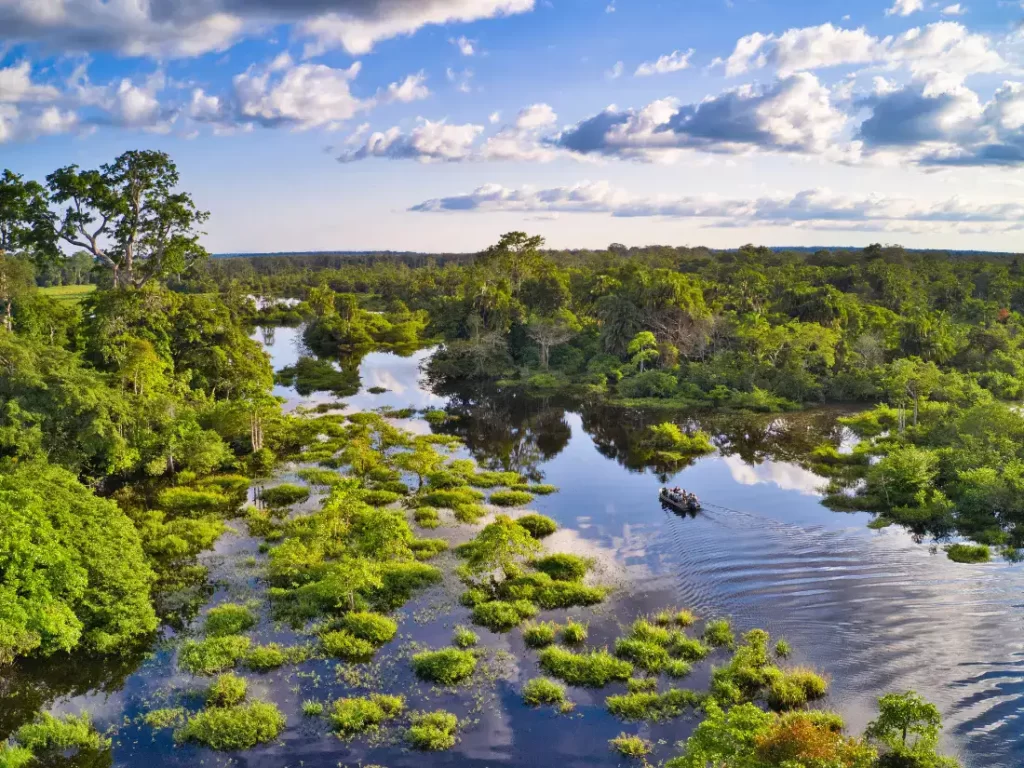
The Congo Basin is the second-largest tropical rainforest in the world, covering approximately 1.5 million square kilometers (580,000 square miles) across several Central African countries, including the Democratic Republic of Congo (DRC), Republic of Congo, Central African Republic, Cameroon, Gabon, and Equatorial Guinea.
While deforestation rates in the Congo Basin have been relatively lower than other tropical rainforests like the Amazon, they have been increasing. According to data from the Food and Agriculture Organization (FAO), the Congo Basin lost an estimated 4.6 million hectares (18,000 square miles) of forest between 2000 and 2019. Still, if nothing changes, a significant part of it might be gone by 2024.
Major drivers of deforestation in the Congo Basin include logging, agriculture (subsistence farming and industrial plantations), mining, infrastructure development, and fuelwood collection. Small-scale slash-and-burn agriculture also contributes to forest loss.
12. Salar of Uyuni

Nestled in the heart of Bolivia, the Salar de Uyuni are the largest salt flats on Earth. However, beneath the glistening expanse lies a hidden treasure that could transform both the region and our modern world—the world’s largest lithium reserves.
Beneath the salt crust of Salar de Uyuni lies an astounding 70-80% of the world’s known lithium reserves. Lithium is a vital component in the production of batteries, including those used in smartphones, electric vehicles, and renewable energy storage.
The Bolivian government has embarked on ambitious plans to extract lithium from the Salar to meet the growing global demand for battery technology. This move has the potential to reshape the country’s economy.
However, lithium extraction can have environmental consequences, including water usage and habitat disruption. Balancing economic development with the preservation of Salar’s unique ecosystem is a complex challenge.
Beyond its salt-covered surface, the Salar is home to unique ecosystems, including flamingo-filled lagoons and geothermal wonders. It’s a haven for wildlife and a testament to the intricate balance of nature.
The extraction of lithium also has social implications, particularly for the indigenous communities living in the region. Ensuring that they benefit from the development is crucial.
13. The Door to Hell, in Turkmenistan

The Door to Hell came into existence when Soviet engineers conducted drilling operations in the area and encountered a natural gas pocket. Fearing that the gas would escape and pose a threat to nearby communities, they set it on fire, expecting it to burn out within a few weeks.
Contrary to expectations, the fire never extinguished. Instead, it has continued to burn relentlessly for over four decades, earning its ominous nickname. The crater measures about 230 feet (70 meters) in diameter, and its fiery pit seems like an entrance to the underworld.
With its strict government controls and limited tourist infrastructure, Turkmenistan isn’t on the typical traveler’s radar. However, the Door to Hell’s unique and surreal allure draws a small number of adventurers each year eager to witness this natural wonder.
It’s challenging to predict the fate of the Door to Hell. While some have speculated that it could burn for decades, others wonder if the Turkmen government might eventually decide to extinguish the methane-fueled inferno.
Editor of Yes, Summer! I am a Brazilian journalist, writer, and digital nomad. I have been traveling the world, telling stories, and tasting local beers since 2010. I am the co-founder of 360meridianos, a reference in travel writing in Brazil, and author of the newsletter Migraciones. On social media, I'm always reachable at @natybecattini.
